Abstract
Aedes guamensis Farner & Bohart is indigenous to Guam but A. albopictus is known to have arrived in 1944. The larval ecology of the two species is very similar; both species breed in tree holes, coconut shells, and other natural and man-made water containers. The purpose of the study was to compare the relative densities of larval populations of the two species with those determined in a survey made in 1948-49. The results suggest that as the population density of A. albopictus increased, that of A. guamensis decreased by as much as about 95% in artificial containers, and by 30% or more in natural breeding habitats. Since there seems to be no environmental factor involved in rendering the breeding places unsuitable for A. guamensis, the reduction in A. guamensis populations may be, in part, the result of competition from A. albopictus.
Full text
PDF
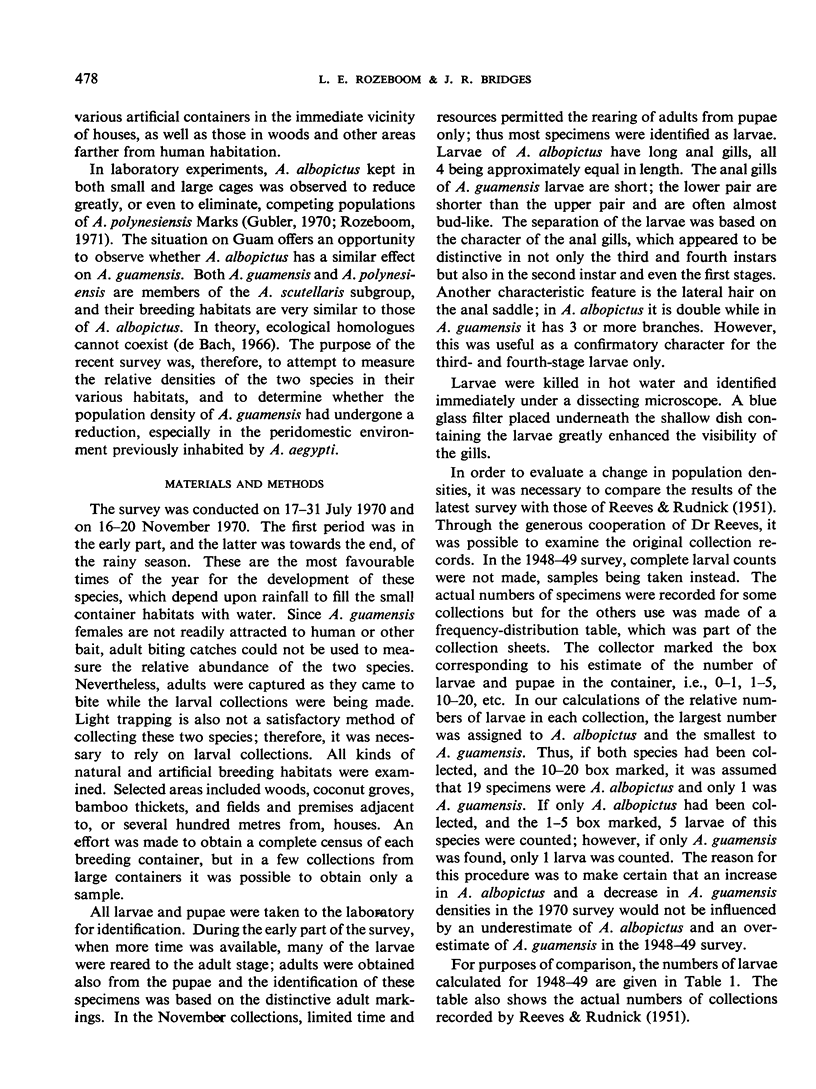
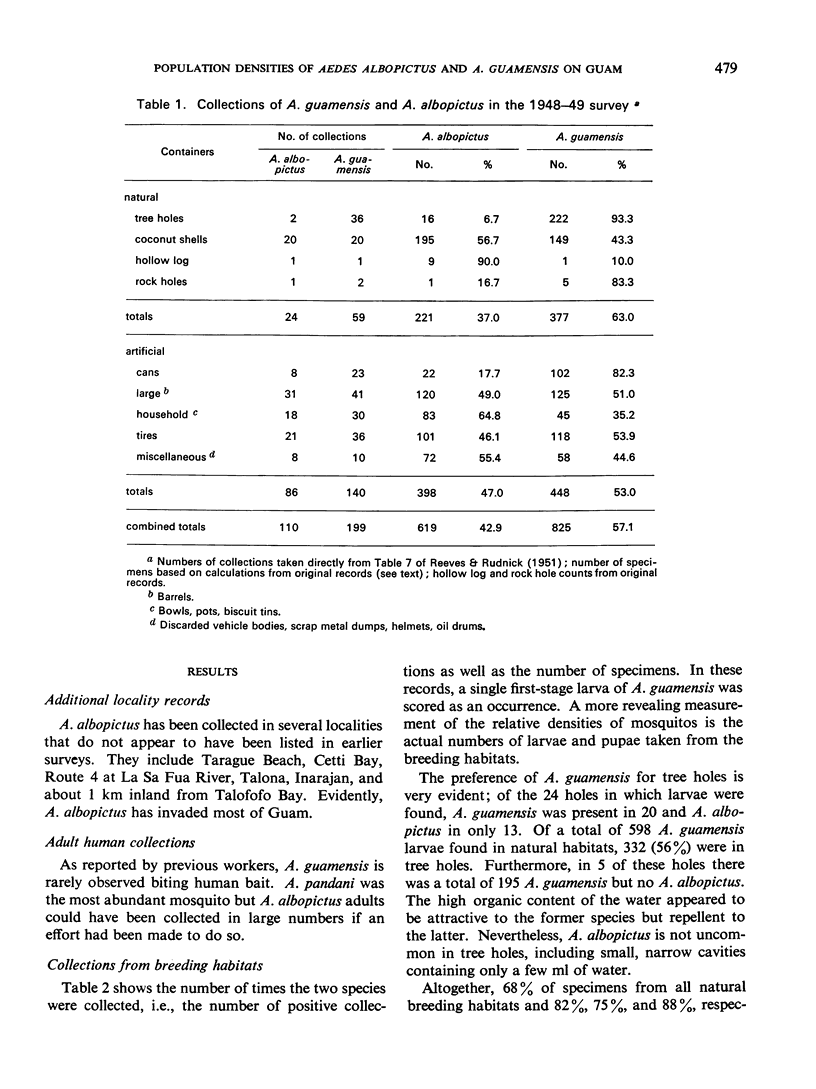
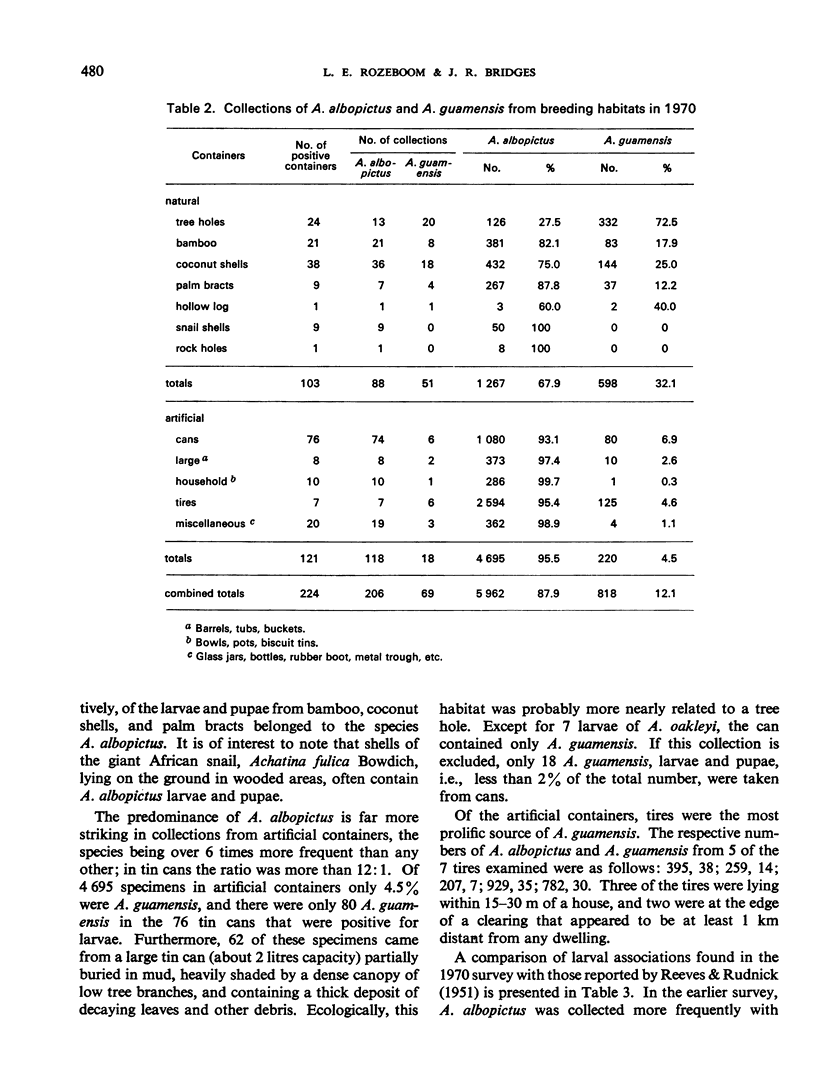
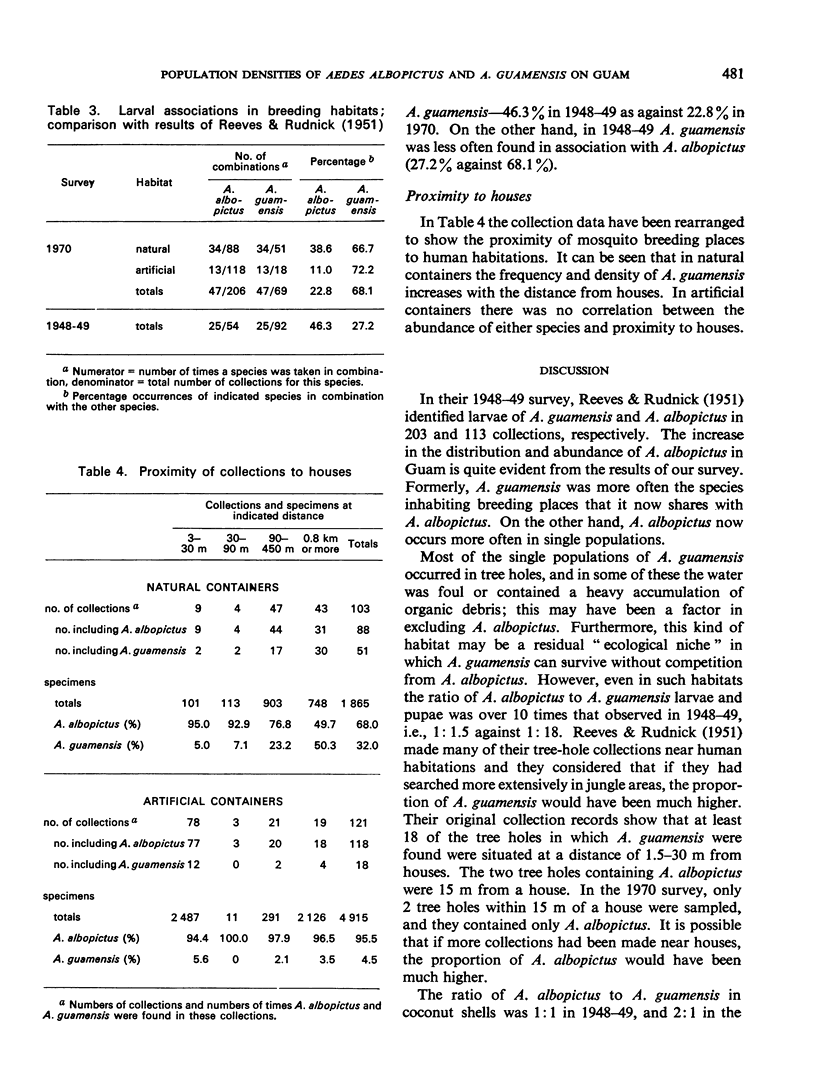
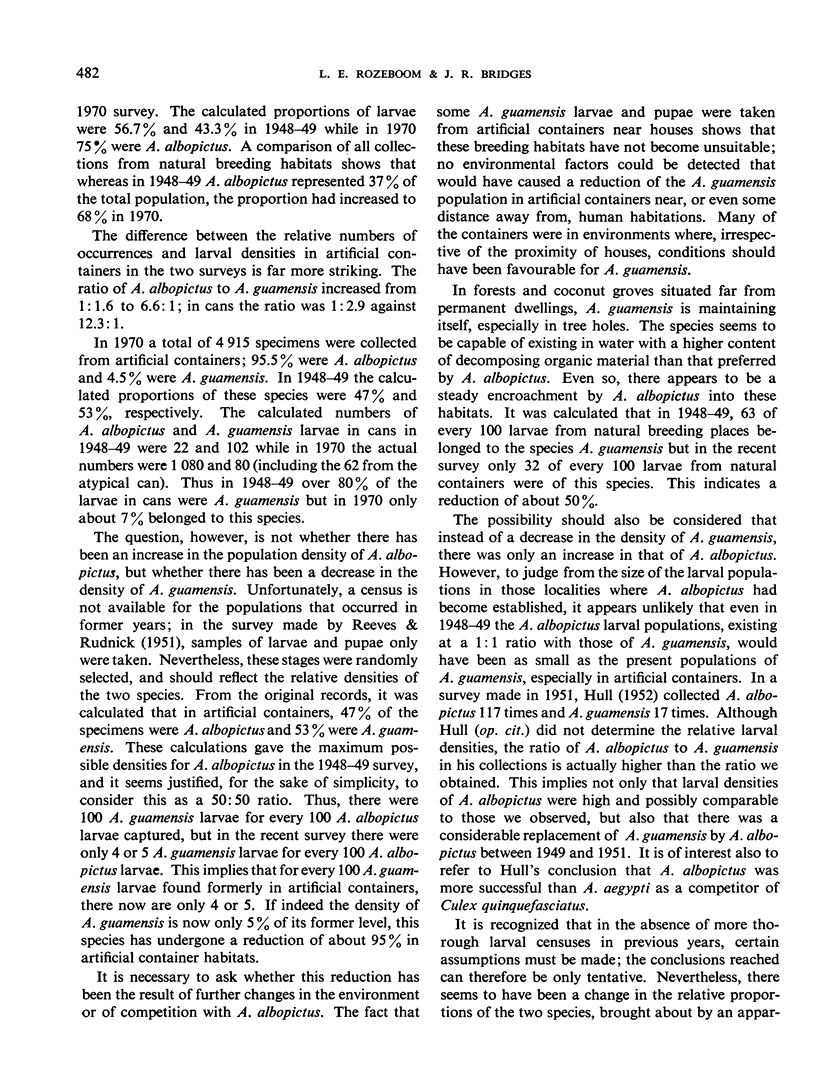
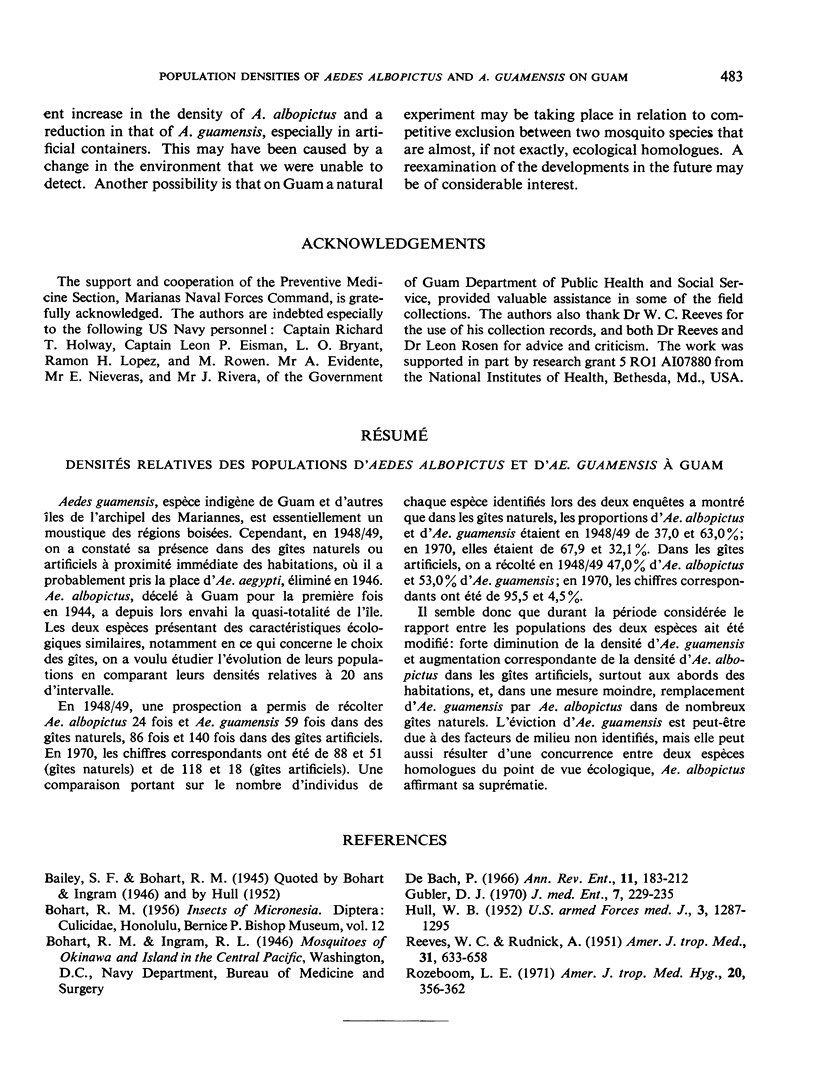
Selected References
These references are in PubMed. This may not be the complete list of references from this article.
- Gubler D. J. Competitive displacement of Aedes (Stegomyia) Polynesiensis Marks by Aedes (Stegomyia) albopictus Skuse in laboratory populations. J Med Entomol. 1970 Apr;7(2):229–235. doi: 10.1093/jmedent/7.2.229. [DOI] [PubMed] [Google Scholar]
- HULL W. B. Mosquito survey of Guam. U S Armed Forces Med J. 1952 Sep;3(9):1287–1295. [PubMed] [Google Scholar]
- REEVES W. C., RUDNICK A. A survey of the mosquitoes of Guam in two periods in 1948 and 1949 and its epidemiological implications. Am J Trop Med Hyg. 1951 Sep;31(5):633–658. doi: 10.4269/ajtmh.1951.s1-31.633. [DOI] [PubMed] [Google Scholar]
- Rozeboom L. E. Relative densities of freely breeding populations of Aedes (S.) polynesiensis Marks and A. (S.) albopictus Skuse. A large cage experiment. Am J Trop Med Hyg. 1971 Mar;20(2):356–362. doi: 10.4269/ajtmh.1971.20.356. [DOI] [PubMed] [Google Scholar]


